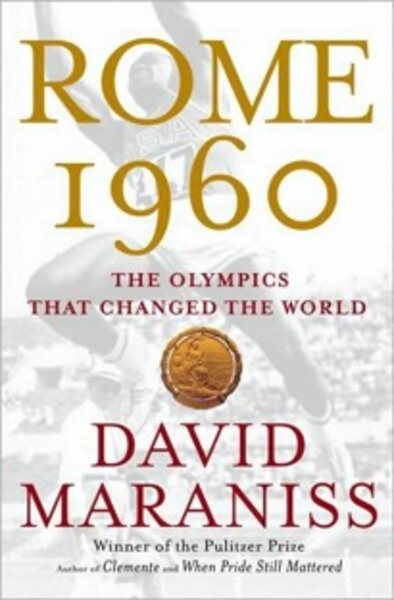'Rome 1960': birth of a new era
Loading...
It was an American election year marked by a presidential candidacy defined by change and breaking barriers.
It was also an Olympic year that came during a time when it seemed clear one era was dying and another was being born. Performance-enhancing drugs cast a shadow, while human rights debates and the role of China in international athletics posed thorny questions.
That description fits 2008, but, in this case, the references are to 1960, when a young Roman Catholic named John Kennedy vied for the presidency and the Summer Olympics in Rome heralded the dawn of a new age.
During the course of 17 days in Italy, a Danish cyclist dropped dead during competition, felled by a combination of heatstroke and amphetamines; South Africa colluded with the International Olympic Committee to extend apartheid to the country’s national team, only to be rebuked by Olympic officials soon after the Games ended; and China was infuriated by the independent team from Taiwan, known as Formosa.
These groundbreaking events – and the people who played roles large and small in them – are explored in Rome 1960, David Maraniss’s marvelous account of the interminable clash between Olympian ideals and pragmatic reality.
At the same time that the tumultuous civil rights era divided America, the rise of African-American athletes riveted the nation – and the world. Decathlete Rafer Johnson not only captured the gold medal in Rome, he became the first minority to carry the American flag during the opening ceremonies, leading the US team into competition on a global stage.
Johnson’s regal presence was at least matched, if not surpassed, by a small-town Tennessee sprinter named Wilma Rudolph. Part of a superb collection of runners at tiny Tennessee State, Rudolph and her teammates thrived despite the hurdles of racism and sexism that loomed over the Olympics in 1960. Rudolph captured the imagination of Italy with gold-medal runs in the 100- and 200-meter races, while anchoring the gold-medal winning 400-meter relay team.
For readers too young to have seen her compete, Maraniss’s account serves as a worthy reminder of why Rudolph’s runs were remarkable beyond sheer athletic achievement. Rudolph was part of an extended family of 22 children. As a child, she suffered from polio. She was discovered when her future Olympic coach happened to referee one of her high school basketball games.
Another inspirational figure was Ethiopia’s Abebe Bikila, the marathoner who ran barefoot through the streets of Rome and set a world record. That he did it running through the capital city of the country that had twice invaded his homeland, Maraniss writes, offered an overwhelming sense of poetic justice.
Maraniss’s examination of the 1960 Olympics includes the emergence of women (a record 617 female athletes competed in Rome, compared with 376 at the Melbourne Games in 1956) to the International Olympic Committee’s futile and often misguided efforts to separate sport from politics and financial reality. The painfully hypocritical reign of Avery Brundage, who ran the Olympic empire with a steel fist for 20 years, comes under severe, and deserved, scrutiny once again. Close Olympics watchers know the roll-call of Brundage sins well, from defending the 1936 Games in Berlin presided over by Hitler to favoring the exclusion of women from competition.
Among Brundage’s biggest blunders: stamping out any form of financial assistance for Western athletes while ignoring the powerful subsidy programs in place for competitors from the Eastern bloc.
This being the era of James Bond and the cold war, plenty of East-West propaganda and spying burn with as much vigor as the Olympic torch. Here, too, are the future endorsement wars, embodied by German runner Armin Hary, who switches shoes between competition and medal stand in a successful bid to pit Adidas and Puma against one another while doubling his under-the-table payday.
The Rome Games were also the first to be televised. There were a whopping 20 hours of taped coverage, with film canisters flown overseas and delivered to CBS headquarters in New York, where a young broadcaster named Jim McKay anchored thousands of miles from the Olympic site. Broadcast rights sold for $600,000.
(This August, NBC’s coverage will encompass 3,600 hours and cost the network $894 million.)
“Rome 1960” also wonderfully recounts the stories of other prominent medalists from the US team: a brash boxer named Cassius Clay (Muhammad Ali), full of braggadocio and an ill-concealed crush on Wilma Rudolph; and a pair of basketball heroes, Oscar Robertson and Jerry West, members of the true dream team.
Maraniss, a veteran Washington Post writer and editor, is best known for his political coverage, particularly his definitive biography of Bill Clinton. During the past decade, his forays into sports have been just as impressive, including a stirring Vince Lombardi biography and a graceful portrait of baseball Hall of Famer Roberto Clemente. With “Rome 1960,” he keeps his winning streak intact.
Erik Spanberg is a freelance writer in Charlotte, N.C.






